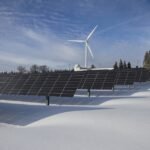Wetlands were once considered undesirable landscapes due to their waterlogged nature and perceived lack of usability. They were difficult to navigate, impossible to build on or farm, and were often seen as breeding grounds for pests like mosquitoes. However, our understanding of wetlands has evolved, and we now recognize their importance in providing essential “services”. Wetlands play a crucial role in purifying water and providing habitats for various plant and animal species.
In many developing countries, especially those facing water scarcity like South Africa, wetlands are critical for supporting people’s livelihoods. Globally, over 1 billion livelihoods depend on wetlands, with 660 million people relying on them for aquaculture and fishing. Livestock owners also depend on wetlands as a source of water for their animals.
In recent years, wetlands have gained recognition for their potential to contribute to climate change adaptation. They absorb carbon dioxide (CO₂), a major contributor to global warming, and help mitigate the impacts of climate change by reducing floods. As a researcher, I conducted South Africa’s first national assessment of coastal wetlands as “blue carbon” sinks, which are marine habitats that store more carbon than terrestrial forests. I also assessed the impact of climate change on mangrove forests, also known as coastal wetlands.
Through my research, I have gained insights into the importance of wetlands in combating the worst effects of climate change. Wetlands can serve as a nature-based solution if they are protected and properly managed. They absorb carbon dioxide from the atmosphere and store it in organic carbon, which remains trapped in the wetland mud for decades or even centuries. This carbon sequestration contributes to long-term climate change mitigation.
In addition to their role in mitigating climate change, wetlands also help humans adapt to its impacts. Coastal areas, in particular, are vulnerable to increased flooding due to rising sea levels and more intense storms and rainfall. Wetlands act as ecological infrastructure, providing natural protection against flooding. They have been successfully integrated into shoreline engineering projects. Restoring and maintaining naturally occurring coastal wetlands like mangroves and salt marshes can also buffer the effects of flooding.
Unfortunately, many urban areas have lost their wetlands to hard infrastructure like buildings and roads. This loss of wetlands removes the protection they provide, making flooding and sea-level rise more severe. Studies in South Africa’s Knysna and Swartkops estuaries have shown that restoring salt marshes can help protect against rising sea levels.
To ensure the continued provision of these climate mitigation and adaptation services, the sustainability of wetlands must be prioritized. This requires action at the regional and national government levels, but individuals can also contribute. People can educate themselves and others about the value of wetlands, participate in restoration projects and clean-ups, support organizations that conserve wetlands, conserve water, reduce pollution, and advocate for the inclusion of wetlands in urban planning and development.
While wetlands can provide various ecological services, their ability to do so is limited by certain thresholds. Catastrophic flooding can destroy wetlands through scouring and erosion. Therefore, careful planning is necessary to prepare for climate change-induced disasters. Solutions to climate change challenges must be complex, utilizing both nature and human engineering. Additionally, solutions need to be tailored to local conditions since there is no one-size-fits-all approach.
For example, creating wetlands as supporting infrastructure can be a cost-effective solution to improve built infrastructure’s flood mitigation capabilities. The size and number of wetlands can influence their effectiveness compared to traditional built infrastructure like flood control reservoirs and dams. Therefore, designing solutions that incorporate natural infrastructure should be considered based on the specific needs of each area.




